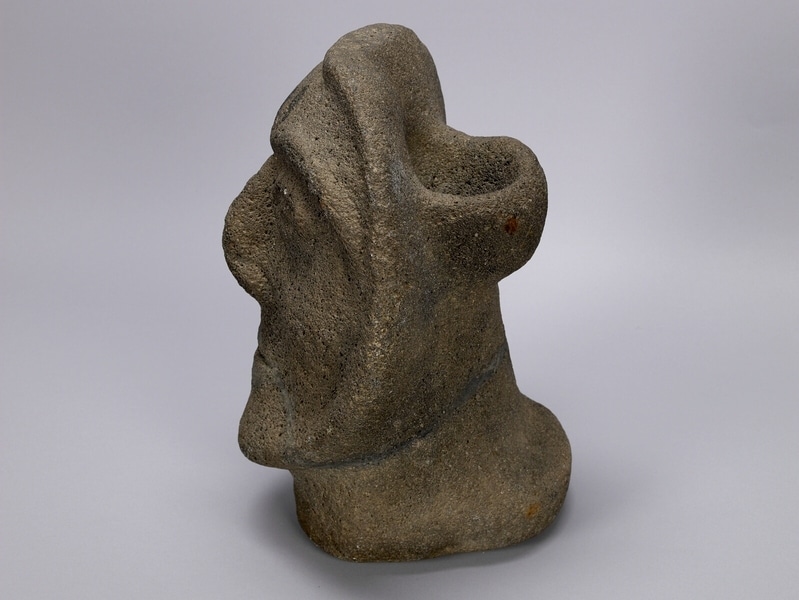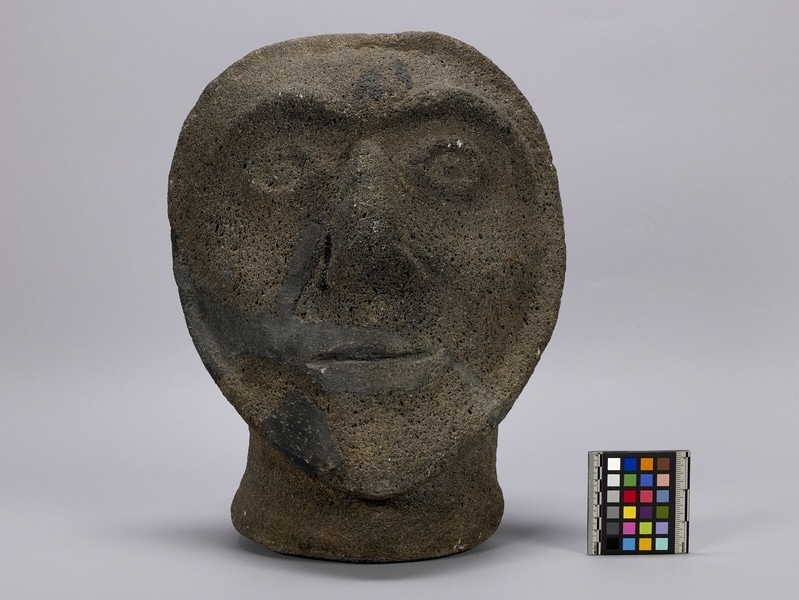Bowl Item Number: A6555 from the MOA: University of British Columbia



Description
Stone bowl or vessel. Sculpture of a human head and neck, with a small basin-like bowl carved at the back of the head. The face has a mask-like appearance with a pronounced chin and a well-defined edge along the sides and top. Circular eyes, prominent brows and nose, and small slit-shaped mouth. Pitted surface.
History Of Use
As is surmised about other, possibly ancient, human-form stone bowls found in southwestern British Columbia, it is possible that this vessel may be been used by ritualists to perform purification rites for certain individuals, marking specific events or life stages.
Cultural Context
archaeological
Specific Techniques
Almost mask-like in form, this sculpture is also a vessel, made by a slow process of hand-grinding stone.
Narrative
This sculpture was ploughed up by A.L. White, on his farm near Sumas, WA, between 1922-1925. White had been plowing new ground a year after he had done some blasting there to remove a stump. The blast had broken the bowl into two pieces, and White cemented them together. He later displayed it with the Grange exhibit at the Lyndon Fair, according to an article that appeared in the Bellingham Herald in February 1944. In Oct. 1948 Dr. Harry Hawthorn and Dr. Borden were on a trip in Washington state, during which they visited A.L. White and persuaded him to give them the stone head for the Museum collection. On their return, Hawthorn arranged for funds to be sent to White in recognition for his find. In 1977 White's daughter, Mrs. Elsie Miller, wrote a note saying the farm had been located on Telegraph Rd., about two miles south of Sumas, in Whatcom County.
Item History
- Made in Washington, USA ?
- Collected in Sumas, Washington, USA during 1925
- Owned by A. L. White before October 1948
- Received from A. L. White (Seller) and Museum Purchase (Funding source) during October 1948
What
Who
- Culture
- Coast Salish: Sto:lo: Sumas
- Previous Owner
- A. L. White
- Received from
- A. L. White (Seller) and Museum Purchase (Funding source)
Where
- Holding Institution
- MOA: University of British Columbia
- Made in
- Washington, USA ?
- Collected in
- Sumas, Washington, USA
When
- Collection Date
- during 1925
- Ownership Date
- before October 1948
- Acquisition Date
- during October 1948
Other
- Item Classes
- carvings & sculpture
- Condition
- fair
- Current Location
- Case 6
- Accession Number
- 1998/0001